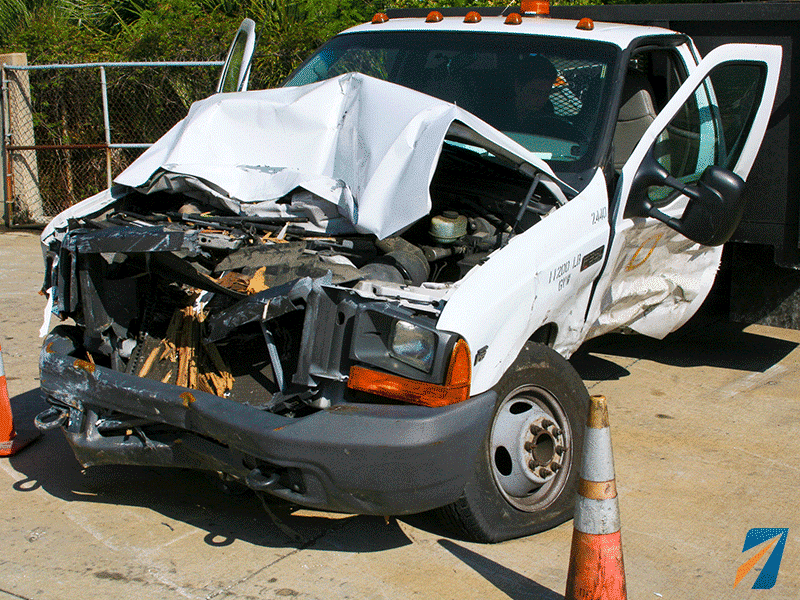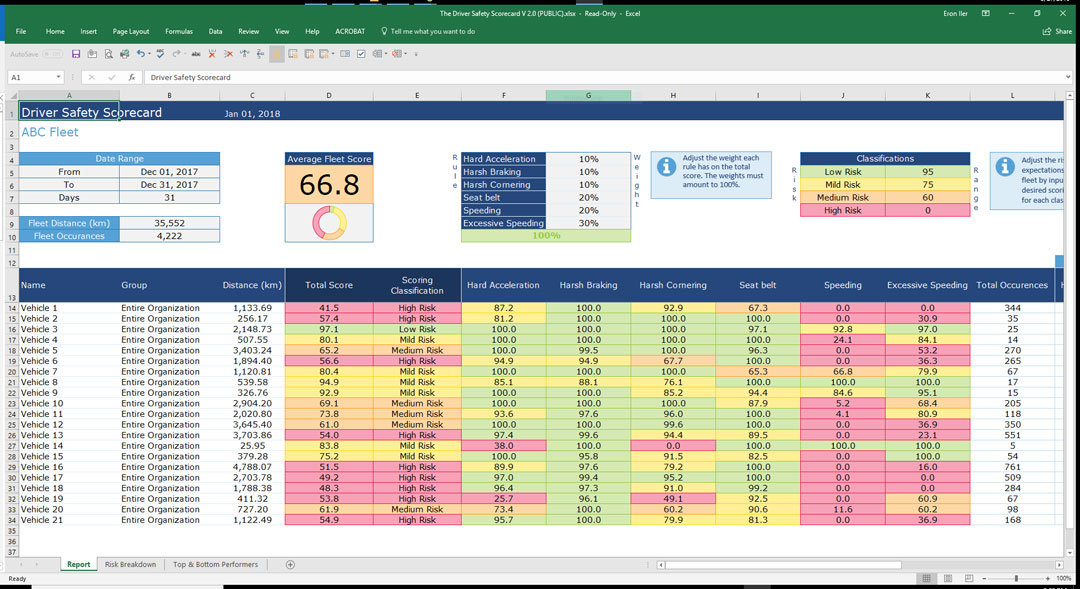Driver Scoring Improves Safety
A company’s greatest asset is its employees the culture, the competitive advantages, and the ability to drive businesses forward begins and ends with human capital. Tragically, motor vehicle crashes are the leading cause of death and injury for all ages, and for fleets, this is a major concern. Accidents that happen on and off the job have far-reaching financial and psychological effects on employees, their co-workers, family, and employers. This is why investing in your employee’s safety and well-being is essential.
Driver safety scorecards and driver alert features can be used to improve fleet safety performance. From real-time audible alerts to actionable information empowered by detailed reporting, telematics offers a wide spectrum of safety performance tools for all types of fleets.
Driver Safety Scorecard
The Driver Safety Scorecard Report focuses on three primary elements of unsafe driving: aggressive driving, seat belt usage, and speeding. The report does not take into account distracted driving behavior; however, symptoms of distracted driving often overlaps with other forms of unsafe driving.
Driver Safety Scorecards reveal potential aggressive driving behaviors.
Aggressive Driving
Aggressive driving can emerge in different ways. There may be times where a driver is not focusing on the road ahead and accelerates hard to catch up to the moving traffic. Moreover, a driver might not be focusing on the traffic ahead and brakes harshly to avoid a collision. Distracted driving can lead to aggressive driving behavior, even if accidental.
On the other hand, driving conditions, especially for those who drive often and for long distances, can be stressful. Stressful driving can translate to frustrated driving, and frustrated drivers are more likely to exhibit aggressive driving behavior.
There are many reasons why drivers become frustrated, including rude behavior, tailgating, being cut off, failure to yield, and passing in the shoulder lane. These examples can be viewed as aggressive driving behavior as well.
Traffic Congestion
Another common frustration for drivers is traffic congestion. Most people do not like traffic because of the time strain it has on their personal lives, but for professional drivers, the negative effects of traffic congestion can have direct financial repercussions. Aside from the typical annoyances of spending long hours in traffic, drivers also feel their productivity is adversely affected.
Drivers are often paid by the mile, and with the Federal Motor Carrier Safety Administrations (FMCSA) Hours of Service limitations to consider, drivers are inherently motivated to drive as far as they can in the least amount of time. When stuck in traffic, routes become less efficient, and attempts to make up for lost time can lead to aggressive driving behavior.
Accellerometer Data
A sizable portion of the 6.8 million car accidents that occur each year are suspected to be caused by forms of aggressive driving, and this can be reduced through the use of telematics. While driving, g-force is exerted on different parts of the vehicle, and the GO device logs these events and uses conditional thresholds to determine the presence of aggressive driving.
As vehicles experience jolting from hard acceleration, exertion from harsh braking and side-to-side movement from harsh cornering, the GO device transmits these data points to Geotabs Store and Forward servers for processing. The data is then pointed to a MyGeotab database where fleets can leverage accelerometer data-based exception rules and turn them into actionable coaching opportunities.
Contact Fleetistics
Ask about testing a fleet monitoring service


